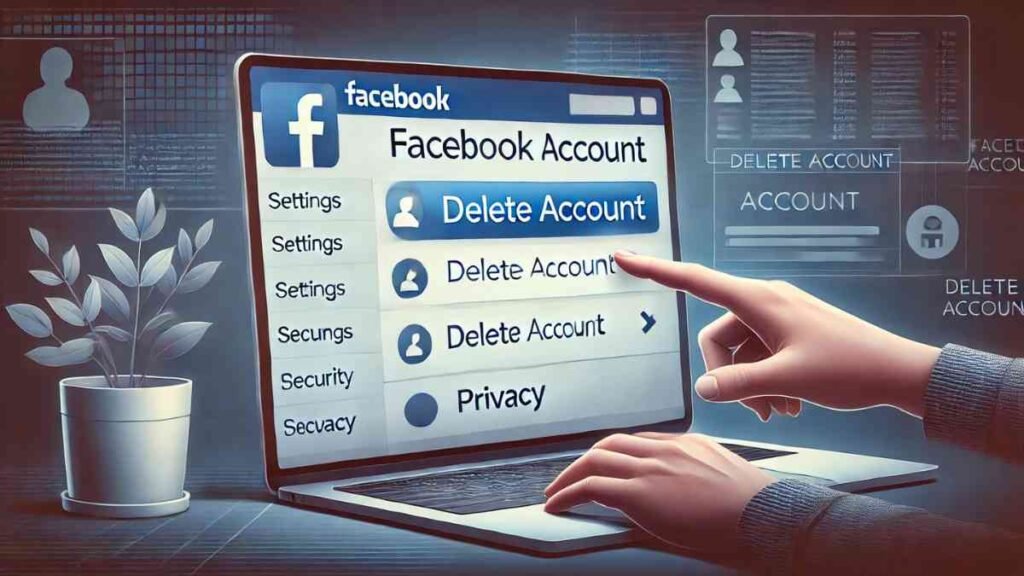Introduction
Are you looking to step away from Facebook for good? Whether you’re prioritizing privacy, seeking a digital detox, or simply moving on, deleting your Facebook account is a straightforward process. This guide will walk you through every step of the journey, providing helpful tips along the way.
Why Delete Your Facebook Account?
Before diving into the “how,” let’s explore the “why.” There are several reasons people choose to delete their accounts:
- Privacy Concerns: Safeguarding personal data from misuse.
- Digital Detox: Reducing screen time to focus on offline activities.
- Simplified Life: Cutting back on unnecessary distractions.
- Account Misuse: Escaping hacked or compromised accounts.
Whatever your motivation, understanding the process ensures you don’t lose important data or access to associated accounts.
Preparing to Delete Your Facebook Account
Before hitting delete, preparation is key:
1. Backup Your Data
Facebook offers a feature to download all your personal data, including photos, messages, and posts. To do this:
- Go to Settings & Privacy > Settings.
- Select Your Facebook Information > Download Your Information.
- Choose the data range and format, then click Create File.
2. Review Linked Accounts
Ensure you’ve updated login details for accounts tied to Facebook (e.g., Spotify or Pinterest). Losing access to Facebook could lock you out of these services.
3. Inform Contacts
Inform friends or followers about your decision to leave the platform to avoid confusion.
Step-by-Step Guide to Delete Your Facebook Account
Step 1: Log In to Your Account
- Open Facebook and log in using your credentials.
- Ensure it’s the account you want to delete.
Step 2: Access Account Settings
- Click on your profile picture at the top-right corner of the homepage.
- Select Settings & Privacy, then click Settings.
Step 3: Navigate to ‘Your Facebook Information’
- On the left sidebar, locate and click Your Facebook Information.
Step 4: Choose Deactivation and Deletion
- Click on Deactivation and Deletion.
- Select Delete Account, then click Continue to Account Deletion.
Step 5: Confirm Deletion
- Enter your password when prompted.
- Click Continue, then select Delete Account.
What Happens After You Delete Facebook?
Deleting your account isn’t an instant process. Here’s what to expect:
- 30-Day Cancellation Window
Facebook allows a 30-day grace period to reverse the deletion. If you change your mind, simply log in and click Cancel Deletion. - Data Retention for 90 Days
Facebook may retain your information in backup systems for up to 90 days. This ensures the platform can recover data in case of accidental deletion or legal obligations. - No More Access
After the 30-day period, your account, photos, posts, and everything else will be permanently deleted.
Consider Alternatives to Deletion
If you’re unsure about permanently deleting your account, consider these alternatives:
1. Account Deactivation
Deactivating your account hides your profile and content without permanently deleting them. You can still use Facebook Messenger while deactivated.
2. Privacy Settings Update
Adjust your privacy settings to control who can see your posts, friend requests, and personal information.
3. Time-Limited Break
Simply log out for a period of time to evaluate your need for Facebook in your life.
Common Issues and Troubleshooting
Forgot Your Password?
Use the Forgot Password feature on the login page to recover access before proceeding with deletion.
Can’t Find the Delete Option?
Ensure your app or browser is updated. Some older versions may not display all features.
Issues with Linked Accounts?
Contact the service provider for apps or platforms linked to your Facebook account to resolve login issues.
Is Deleting Facebook Right for You?
The decision to delete Facebook depends on personal priorities. If privacy and digital well-being are your goals, permanent deletion may be the right choice. On the other hand, deactivation offers a less permanent option for those unsure about cutting ties completely.
Conclusion
Deleting your Facebook account is a significant step, but the process is straightforward when approached methodically. By following the steps outlined in this guide, you can ensure a smooth transition and safeguard your digital presence. Whether you’re opting for deletion or simply exploring other options, taking control of your online life starts here.
For More Visit, MirrorMagazine.co.uk


